How students learn perioperative care
At the Rosenberg School of Optometry at the University of the Incarnate Word, fourth-years get hands-on experience in care for patients pre- and post-surgery, preparing them for real-world comanaging relationships.
Figure 1. Close-up view of the on-campus surgical suite in the leased space within Rosenberg School of Optometry’s clinic.
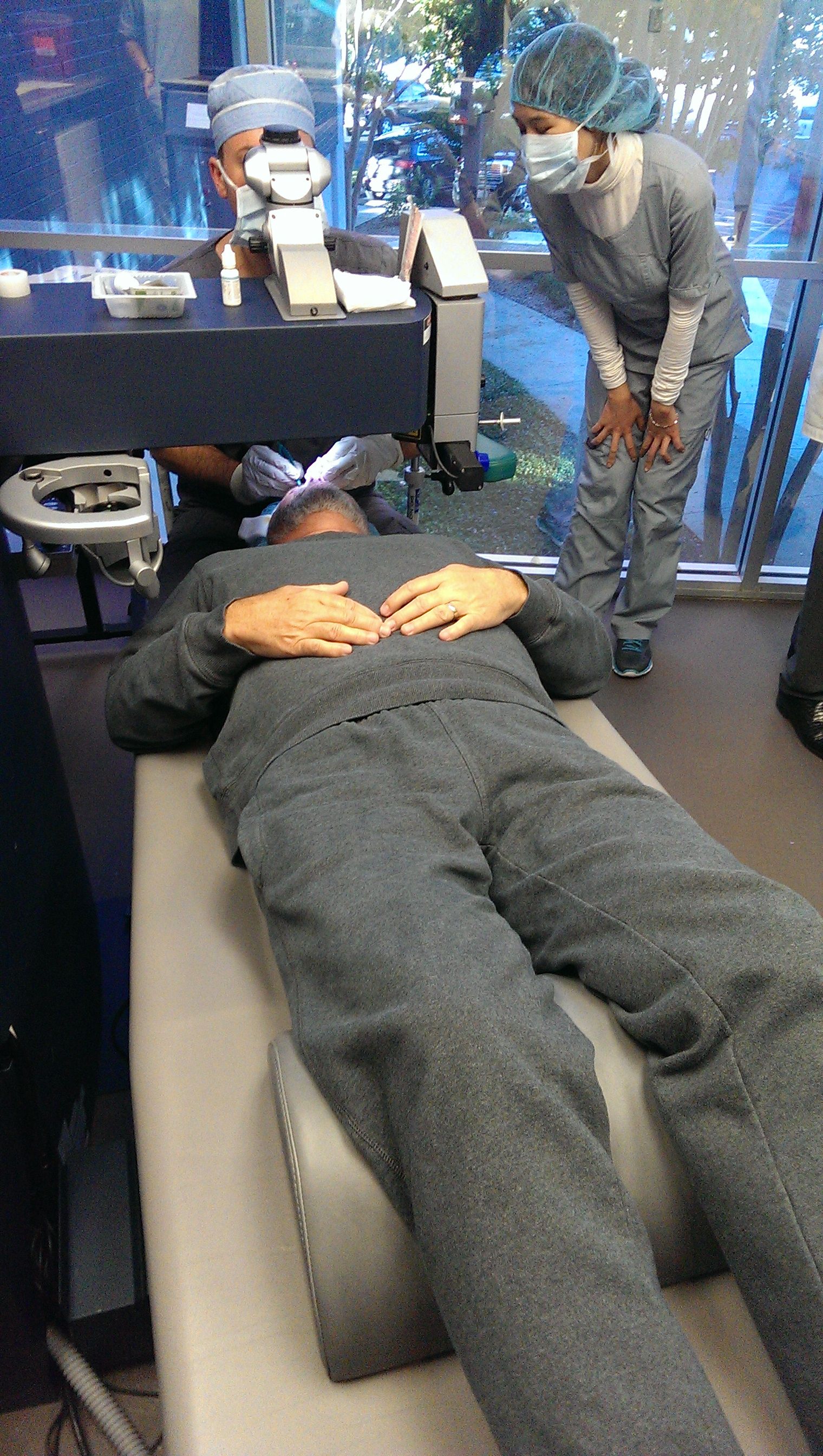
Figure 2. Students observing a LASIK surgery in the on-campus surgical suite.
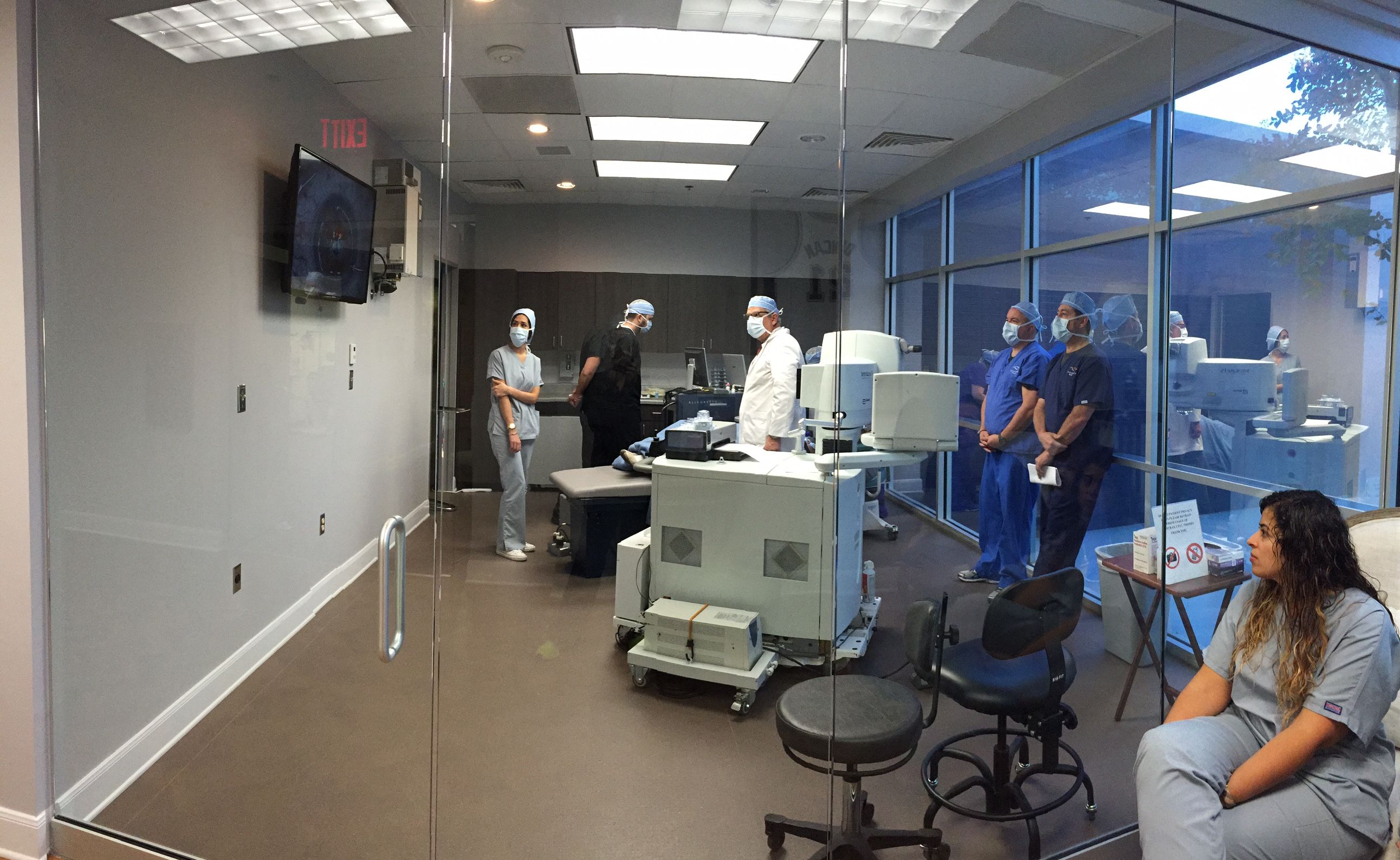
Figure 3. Dr. Parkhurst marking an eye before cataract surgery as a student intern looks on.
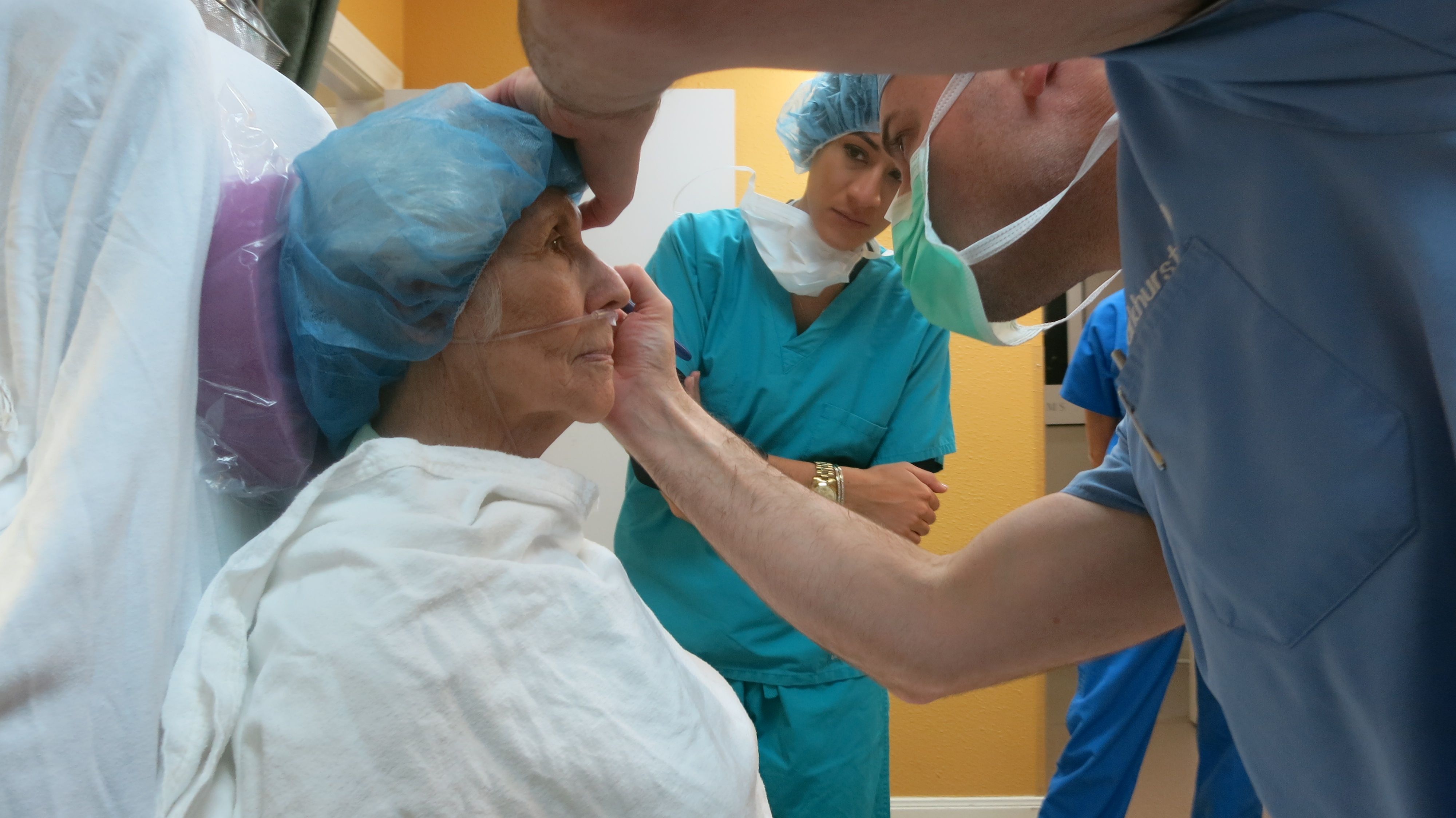
Figure 4. Student observing in the cataract surgery suite at an off-site ambulatory surgical center (ASC).
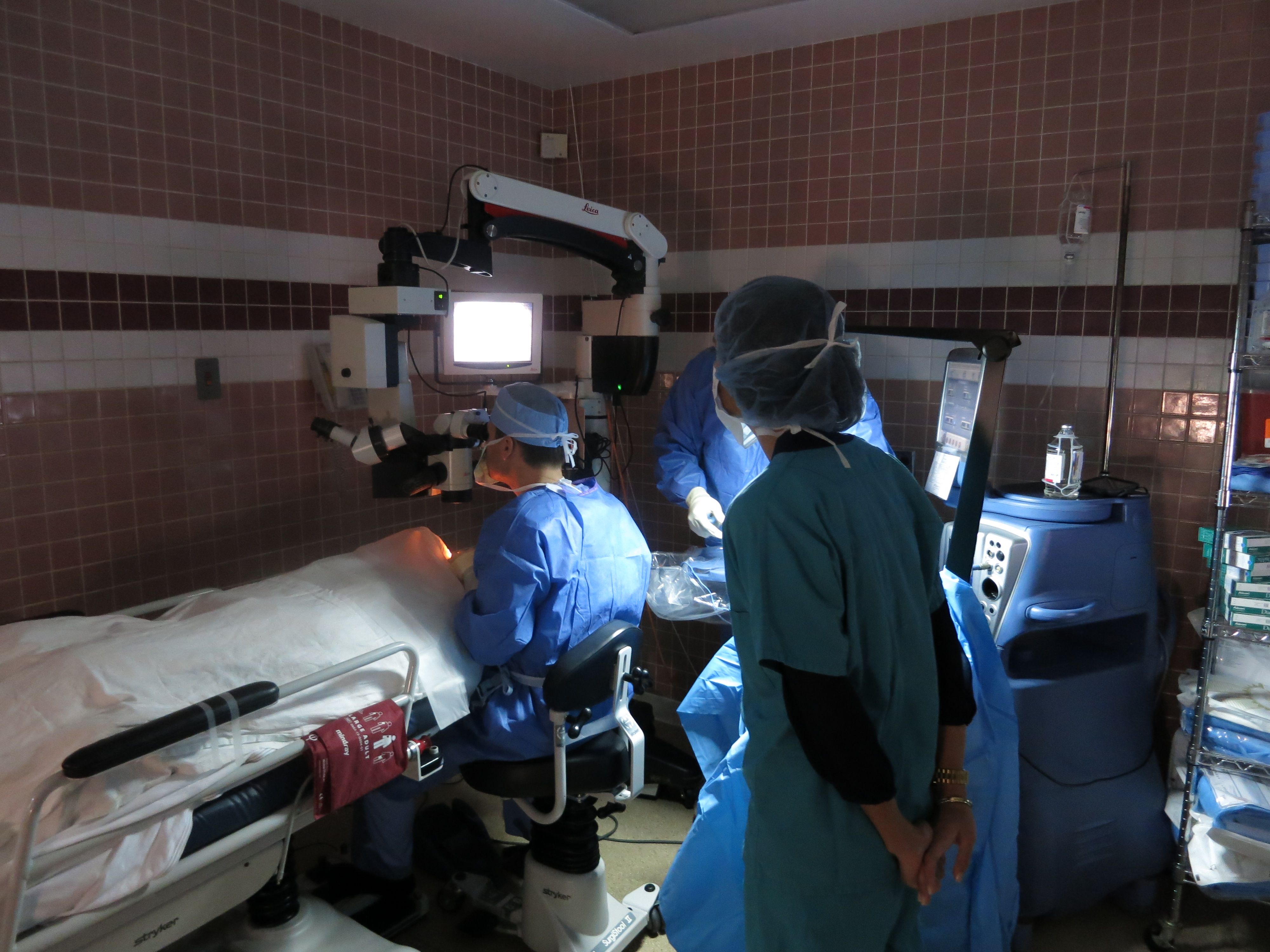
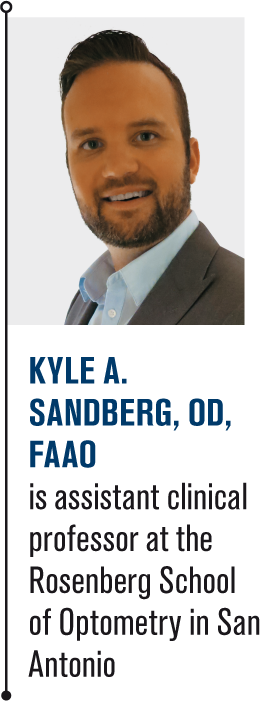
At the Rosenberg School of Optometry (RSO) at the University of the Incarnate Word (UIW) in San Antonio, all fourth-year students participate in a mandatory perioperative care rotation-to my knowledge, the only such program in the country. The goal is to expose 100 percent of optometric interns to the clinical and business concerns involved in comanaging surgical care.
Knowledge of perioperative care is essential for those who want to practice full-scope optometry or plan to work in an OD-MD group practice. At minimum, a primary-care optometrist should be able to advise patients on their options and make a referral to a good surgeon. It is even better if the optometrist can actively participate in their patients’ perioperative care.
The rotation
During their fourth year, students participate in two external clinical rotations as well as one semester in-house, which includes the perioperative rotation at Parkhurst NuVision, an independent cataract and refractive surgery practice that leases space inside the UIW Eye Institute (see Figure 1).
During the four-week perioperative rotation, students have the opportunity to observe cataract surgery, laser vision correction (including the new small-incision lenticule extraction [SMILE] surgery), as well as other forms of refractive surgery, such as corneal inlays and phakic intraocular lenses (IOLs).
Students may also participate in the care of patients undergoing Nd:YAG capsulotomy, phototherapeutic keratectomy (PTK), corneal crosslinking, selective laser trabeculoplasty (SLT), or implantation of a trabecular microbypass system for the treatment of glaucoma. The practice is a busy clinical trial site, so students sometimes get to work with new technologies prior to U.S. Food and Drug Administration (FDA) approval.
With the supervision of RSO faculty and Parkhurst NuVision Greg Parkhurst, MD and Bobby Saenz, OD, interns conduct preoperative and postoperative exams, which allows them to hear directly from patients about concerns and motivations prior to surgery. Postoperatively, interns see firsthand the impact of surgery and patients’ reaction to their new vison. I am convinced this experience is far more valuable than watching hours of surgical procedure videos.
Parkhurst NuVision is a referral-based surgical practice that doesn’t offer primary care or optical services. Here, students are exposed to elective refractive patients who are often paying out of pocket, have high expectations, and have been referred by private-practice optometrists. When those same students rotate through RSO’s outpatient surgery service, they have the chance to see patients in another location, an underserved part of the city with patients exhibiting advanced cataracts and complex disease states.
For many students, the perioperative rotation is their first exposure to new technologies revolutionizing cataract surgery, such as multifocal and extended-depth-of-focus IOLs and precision surgical tools like femtosecond lasers. Faculty stresses the importance of primary-care optometrists learning about these technologies so ODs can better counsel patients and set expectations for the surgery center.
The rotation may also be the first time students have been required to have a “medical mindset.” Students must be available for patient questions or emergencies in the evenings and must set aside time on a Saturday morning to see Friday’s surgical patients, rather than limit appointments to traditional business hours.
Patient communication is a huge part of what we teach students and one of the most valuable lessons they take with them from the program. I tell students that their foremost role at every postoperative appointment is to reassure the patient. What is routine to us as practitioners is a once-in-a-lifetime event for the patient, who may be extremely anxious.
For example, we saw a patient who had 20/20 /J1 vision one week after implantation of a presbyopia-correcting IOL but was worried that something might still go wrong. She breathed a sigh of relief when the doctor told her, “Everything looks great.” That is why it is important to reassure patients that their eyes look good and their symptoms (if any) are normal. If anything is not normal, we want the patient to know we can identify the problem and have a plan for managing it.
The business of comanagement
Helping young optometrists understand the ins and outs of the business relationships they may have with surgeons is just as important to the program as imparting clinical knowledge.
I tell students to keep in mind that they cannot legally be compensated for a referral alone, but they absolutely should be compensated for legitimate perioperative care.
The most important criterion for a surgical partner is the ability to perform excellent surgery with state-of-the-art technology. In a sparsely populated area, the optometrist may not have a lot of choices. The patient’s well-being has to come first-whether the surgeon is “OD-friendly” or not. But in most markets, optometrists should seek out fruitful relationships with surgeons who respect optometry’s role, support ODs by returning patients to them, and achieve first-rate surgical outcomes (see “Characteristics of the ideal comanagement partner”).
It is important for ODs to know what range of procedures their comanaging surgeons perform and what technologies they believe in. Understand why they choose the IOLs they implant most frequently and what their laser vision correction results are. Price is important to patients, but the cheapest price does not mean good value if patients don’t get the outcomes they desire.
Communication and respect are important. Our surgical partners should be willing to provide education on new procedures and technologies, welcome ODs to their surgery centers to observe surgery, and answer questions about patient symptoms or postoperative regimens. There should be a clear understanding of when patients will be returned to the referring optometrist.
In my experience, ophthalmologists who care about their OD relationships put systems in place to generate notes back to the referring doctor and to ensure a smooth handoff for postoperative care. In addition, ODs must have systems in place to ensure MDs receive postoperative notes.
Comanagement a net positive
My colleagues at RSO and Parkhurst NuVision agree that comanagement helps optometrists become financially more independent and moves them up the ladder from providing not just vision correction but also medical eye care and integrated surgical care. In our experiences, this provides the practice with a higher return on investment and greater patient loyalty.
We look to instill a philosophy that is consistent with the optometric oath, which states that the optometrist will “place the treatment of those who seek care above personal gain” and “advise patients fully and honestly of all which may serve to restore, maintain, or enhance their vision and general health.”
Today, a full and honest discussion with most patients has to include refractive surgery. Procedures are now available with excellent results for patients at every age and level of refractive error. For some patients, including contact lens abusers, athletes, those with extreme ametropia, military combat personnel, and heavy travelers, refractive surgery may be the best solution for their vision needs.
Beyond the ethical reasons for discussing surgical options, doing so makes good business sense. Optometrists can derive significant revenue from participating in surgical care and can then continue to see patients for regular examinations and medical eye care.
In addition, not discussing surgical options only hurts the optometrist. In a 2012 survey of contact lens wearers,1 46.8 percent of respondents said they were at least considering refractive surgery. Certainly, not all of those patients will go on to have surgery. But those who do rank refractive surgery among their top life experiences-the kind of thing they post on social media and tell all their friends. Comanaging optometrists can reap the rewards of patient satisfaction and word of mouth when they participate actively in that surgical experience.
At RSO, we are excited about our perioperative rotation and what it means for our graduates’ understanding of surgical options, surgical care, and the benefits of comanagement during their optometric careers.
References:
1. Contact Lens Wearers Insight 2012 Survey. Jobson Research. Available at: http://www.jobsonresearch.com/scripts/prodList.asp?idCategory=18. Accessed 05/17/18.
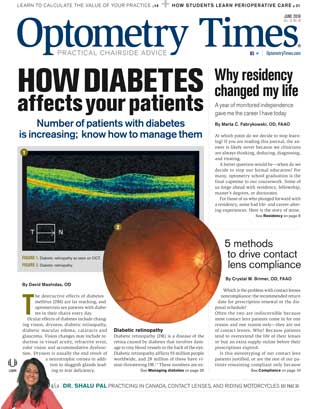
Newsletter
Want more insights like this? Subscribe to Optometry Times and get clinical pearls and practice tips delivered straight to your inbox.